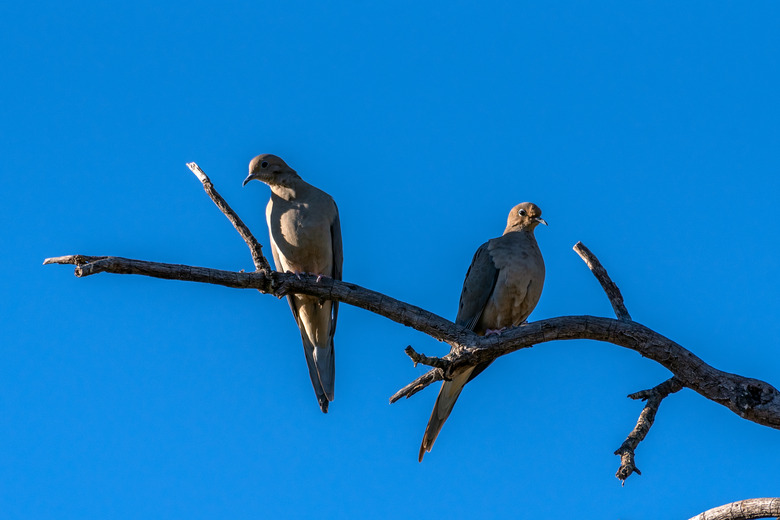How Long Is The Life Span Of A Mourning Dove?
Mourning doves are songbirds that are quite common in North America. Small and thin, mourning doves are approximately 12 inches in size. These birds are fawn-colored with black spots and long, distinctive tails. There are many interesting facts about mourning doves, such as the lifespan, habitat, breeding and feeding habits of these beautiful creatures.
Dove Lifespan
Dove Lifespan
The average lifespan of a mourning dove is approximately a year and a half. According to the Wild Bird Watching website, mourning doves in their first year of life have a mortality rate of up to 75 percent, while adult mourning doves have a mortality rate of up to 60 percent. Following the survival of the first year, which is the hardest due to predators and dove illnesses, mourning doves can live up to five years. The All About Birds website states that the oldest known mourning dove lived to be more than 31 years old.
Feeding and Attracting
Feeding and Attracting
Mourning doves feed on a variety of natural foods, such as insects, grains which are often found in open fields, and many wild seeds. These birds are ground feeders and, as such, prefer tray-style bird feeders. If you wish to attract mourning doves to your yard, fill your bird feeders with a variety of seeds, cracked corn and millet. Birdbaths and running water, as well as the cover of bushes and trees, will also attract mourning doves to your yard.
Breeding and Nesting
Breeding and Nesting
Mourning doves reproduce quickly, and have up to 12 chicks during a single breeding season. The male courts the female before choosing a nest site, which is often a high tree branch, and assists the female with building the nest. Mourning doves build flimsy nests or reuse the empty nests of other birds. The male and female mourning doves take turns sitting on the nest for between 14 and 15 days, and mourning dove babies venture out of the nest approximately two weeks after hatching.
Interesting Facts
Interesting Facts
Mourning doves, according to the Wild Birds Unlimited website, are unable to sweat and, as a result, pant in a fashion similar to dogs. Because of this, these birds must drink large amounts of water. One of the most prolific birds in the United States, mourning doves have been recorded flying at speeds of up to 55 miles per hour. During the breeding season, mourning doves are monogamous, remaining with the same partner; the Wild Birds Unlimited website states that evidence has been found suggesting that mourning doves also pair up with the same mates for future breeding seasons.
Cite This Article
MLA
, Chelsea Oliver. "How Long Is The Life Span Of A Mourning Dove?" sciencing.com, https://www.sciencing.com/long-life-span-mourning-dove-8374317/. 22 November 2019.
APA
, Chelsea Oliver. (2019, November 22). How Long Is The Life Span Of A Mourning Dove?. sciencing.com. Retrieved from https://www.sciencing.com/long-life-span-mourning-dove-8374317/
Chicago
, Chelsea Oliver. How Long Is The Life Span Of A Mourning Dove? last modified March 24, 2022. https://www.sciencing.com/long-life-span-mourning-dove-8374317/
